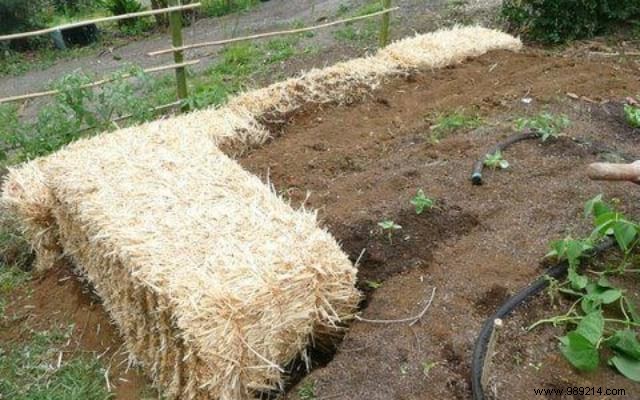
When you have potted plants or a garden, you need to water regularly .
But water is precious and is becoming a rare commodity that must be preserved!
It is unthinkable to waste it, even to take care of its flowers.
Fortunately, there are simple and effective solutions to reduce your water consumption in the garden by half!
Here are 9 gardening secrets to save watering without hurting the plants . Watch:


To save water and water less often, a soil mix helps retain moisture better.
Indeed, the potting mixes sold on the market dry out much too quickly...
And some clay garden soil too.
To avoid this, it is better to make your own mixtures which need much less water. For example:
- 50% garden soil + 50% compost
- 30% garden soil and 70% heather soil, especially for plants that need acidity
With these mixtures, you can halve your water consumption in the garden. Amazing, isn't it?

If the ground contains small pebbles, do not remove them!
Especially for potted plants. Why?
Because they retain water without it going straight through the pot holes.
The finer the soil, the more water escapes without having had time to touch the roots.
As for the sand, do not put it in the ground, because it does not retain water.
On the contrary, water flows even faster with sand. Avoid!

These little balls absorb water and redistribute it when the soil is dry.
The ideal is to put about 10% in relation to the volume of soil.
These balls are sold in small 6kg bags or in large quantities.
With these balls, you save up to 50% watering.
Obviously, we do not put clay balls for cactus-type plants, because they do not have the same water needs.

Pozzolana is a volcanic stone crushed into pieces the size of clay balls.
It also retains water to release it very gently when the earth needs it.
The proportions are the same as for clay pebbles:10% of the total amount of soil.

Mulching consists of placing plants at the foot of the plant as a protective layer between the earth and the air.
The layer should be at least 10 cm thick. This mulch (also called "mulch" in English) has many virtues:
- protect the plant from cold or extreme heat;
- prevent the growth of weeds;
- protect creeping fruits and vegetables such as pumpkins, cucumbers, strawberries or courgettes. These plants will crawl on a dry surface which avoids contact with humidity and related diseases;
- limit water evaporation whether in the garden or in flowerpots. With this technique, watering can be reduced by around 60%.
There are many types of mulch on the market:thin or thick pine bark, cocoa shells, flax fibers or dry wood residues.
Each of these mulches is layered 10 to 12 cm thick to save up to 50% watering.

The geotextile is a kind of woven veil that lets water in, but prevents weeds from growing.
You can cover the soil of flower pots, planters or a vegetable patch with it.
But also all flower beds or the complete garden.
This textile is available in different colors:grey, green, brown or black.
It can then be covered with mulch in a thin layer to camouflage it.
This technique makes it possible to considerably space out the waterings and to gain 50% of water.

Cardboard can also be used as "mulching" provided that it is a cardboard without writing, because the ink can be toxic.
Cardboard is ideal for seasonal crops.
Cut a hole in the cardboard for the plant to pass through, and cover the ground with it.
It protects the plant's roots from the sun and prevents water evaporation .
It absorbs water and redistributes it as soon as the soil is dry.
A good way to save watering by at least 50%.
As the cardboard is biodegradable, it has a fairly short lifespan (about 10 to 12 months), then it will have to be changed.
Do you think cardboard isn't too decorative?
Simply cover it with pine cones, grass clippings or pine bark to make it look prettier.

Yes, the name "mulch" comes from there!
In the old days, we simply spread a thick layer of straw over the crops to protect them.
The easiest way is to find straw in bales, because it's easier to carry home.
Farmers will be able to sell you some, or give you unusable leftovers from the previous season.
Straw keeps the soil cool and moist , we therefore reduce watering in periods of high heat.
To reduce the large stems a little, you can pass them to the mower:it scatters better afterwards.
How to do ? Put the straw on your freshly mown lawn up close.
Run the mower over the straw and collect the shredded result in the grass catcher.
You can now spread all this directly at the base of your fruits and vegetables in pots or in the ground or even at the foot of the hedge.

You can mulch your garden with your own plants that you dry.
Nothing could be simpler!
When you prune your plants, let them dry and then cover the ground with them.
Perfect when cutting hedges, rhubarb leaves or when picking up dead leaves and grass clippings.
By protecting the soil in this way, not only do you save money because you don't buy anything, but you also save water!
Indeed, the waterings are spaced several days apart from usual.